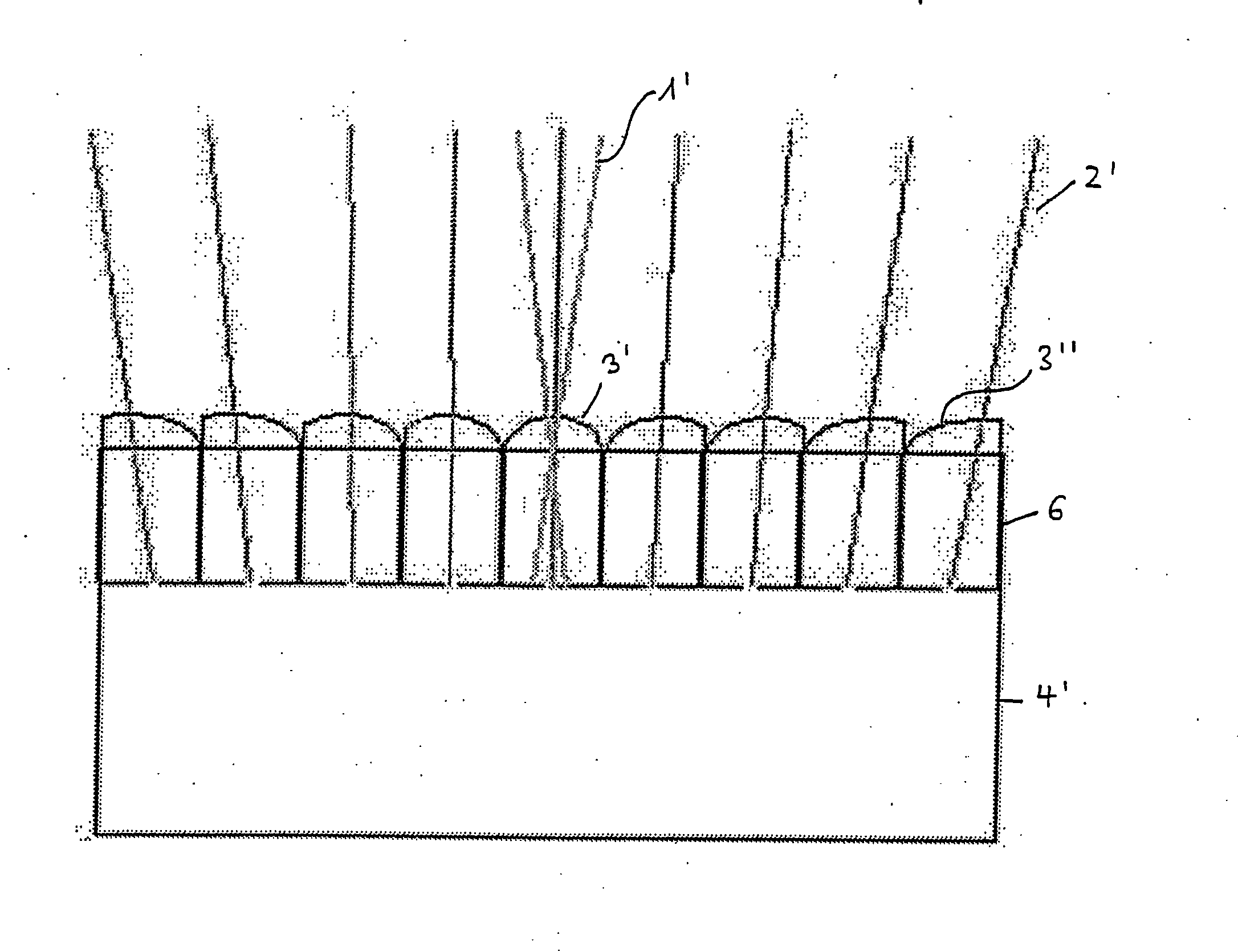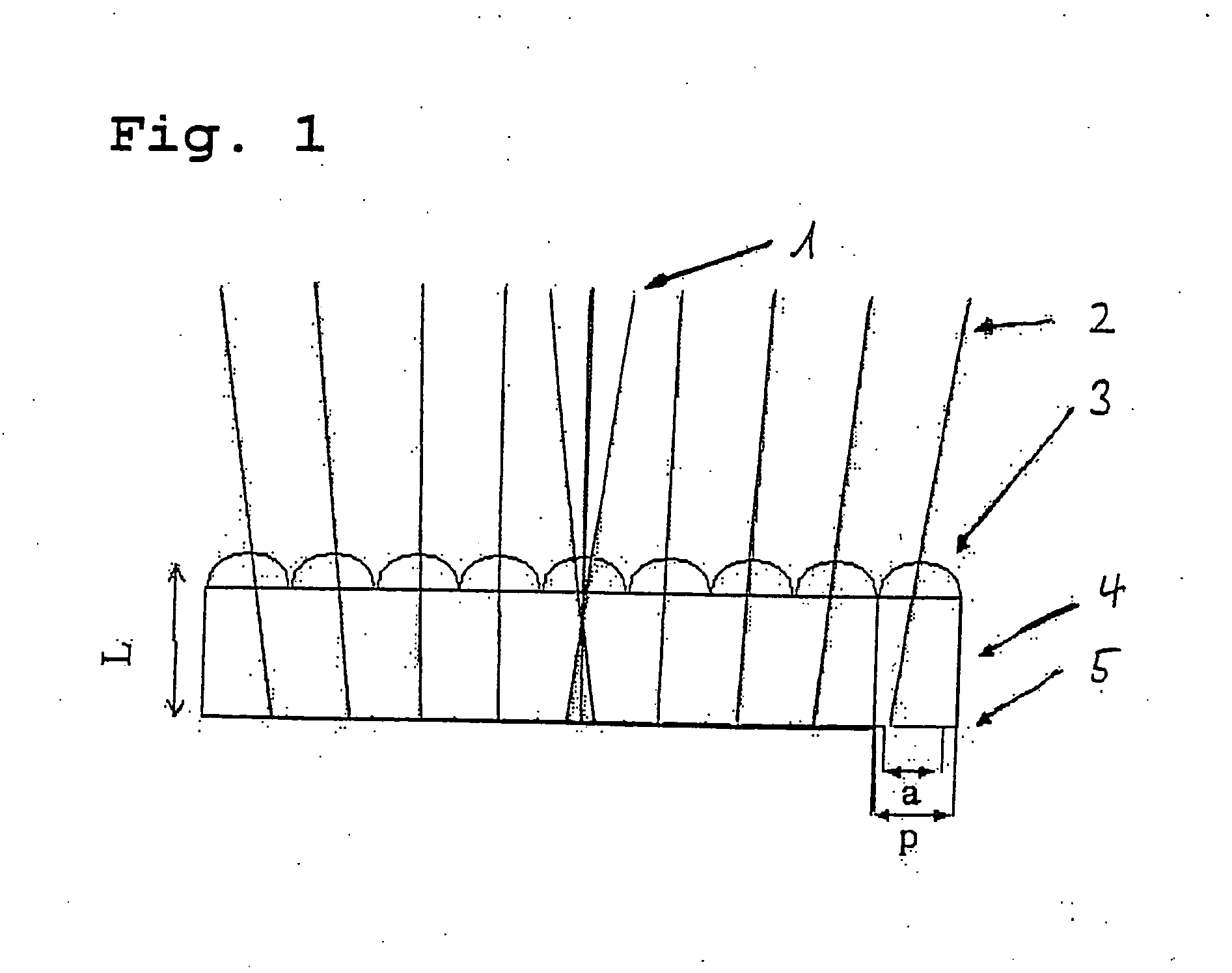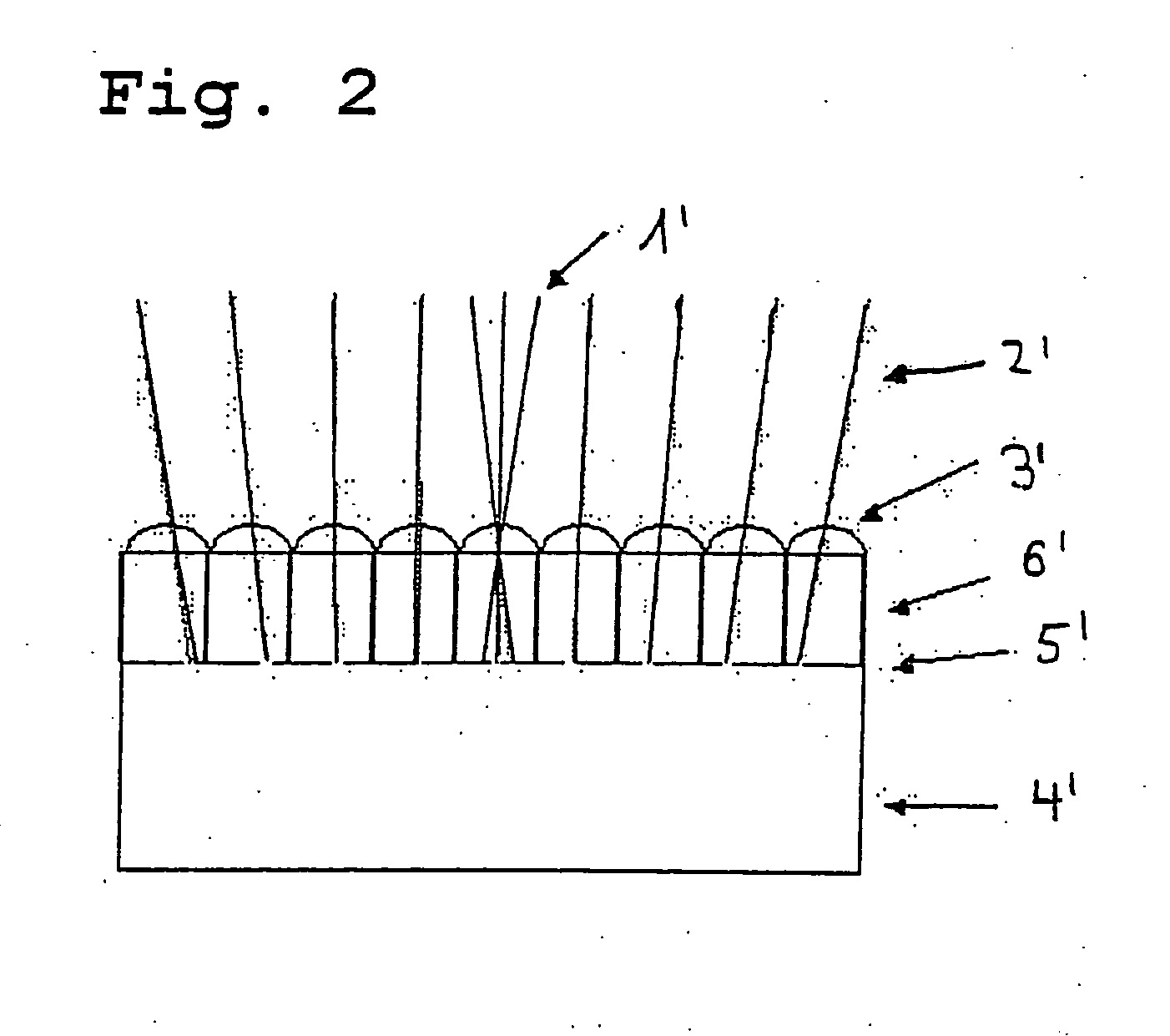Image recognition system and use thereof
- Summary
- Abstract
- Description
- Claims
- Application Information
AI Technical Summary
Benefits of technology
Problems solved by technology
Method used
Image
Examples
Embodiment Construction
[0105]FIG. 1 shows a variant of the subject according to the invention. In FIG. 1 the following reference numerals mean: 1, Acceptance of an optical channel (Δφ); 2, Sampling of the FOV (sampling angle ΔΦ); 3, Lens array, lenses with diameter D and focal distance f are centred in cells with pitch p; 4, Substrate; and 5, Pinhole array (in metal layer), pinhole offset in cells determines viewing direction, diameter of the pinhole d determines acceptance angle Δφ
[0106] Optical axes which can be produced in different ways (hereby pitch difference of the microlens array and the pinhole array) and which increase outwards in inclination in order to achieve the (negative) enlarged imaging mean that a source in the object distribution delivers only one signal in a corresponding photosensitive pixel if it is located on or near to the optical axis of the corresponding optical channel. If the source point is moved away from the considered optical axis, then the signal of the corresponding detec...
PUM
 Login to View More
Login to View More Abstract
Description
Claims
Application Information
 Login to View More
Login to View More - R&D
- Intellectual Property
- Life Sciences
- Materials
- Tech Scout
- Unparalleled Data Quality
- Higher Quality Content
- 60% Fewer Hallucinations
Browse by: Latest US Patents, China's latest patents, Technical Efficacy Thesaurus, Application Domain, Technology Topic, Popular Technical Reports.
© 2025 PatSnap. All rights reserved.Legal|Privacy policy|Modern Slavery Act Transparency Statement|Sitemap|About US| Contact US: help@patsnap.com



